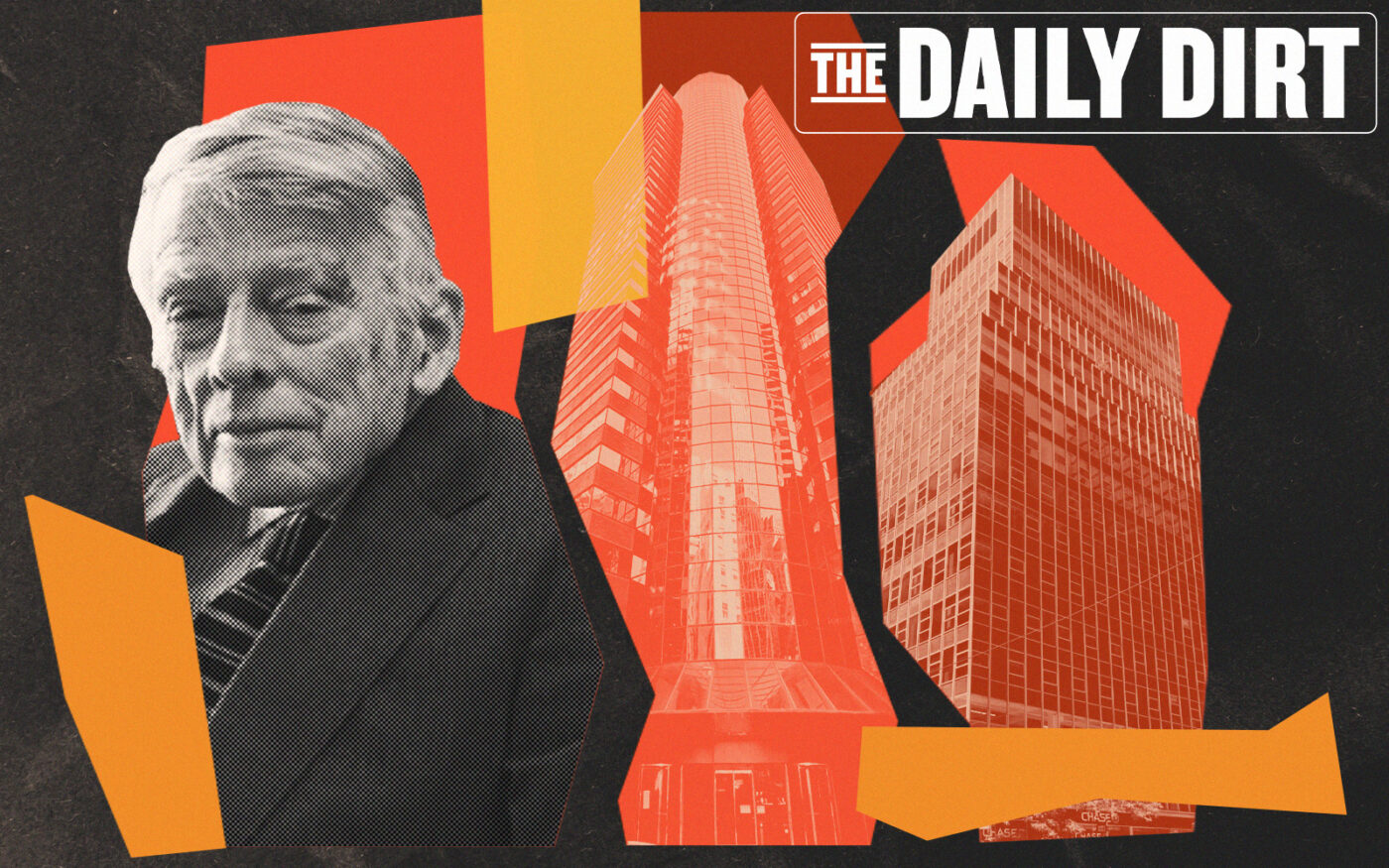The city threw a lifeline to two struggling office towers this week, granting a combined $100 million in tax breaks as part of the city’s Manhattan Commercial Revitalization program.
The two recipients — 850 Third Avenue in Midtown and 175 Water Street in the Financial District — were close to the brink: 850 Third is 67 percent vacant and 175 Water is 95 percent vacant. The program, known as M-CORE, requires its beneficiaries to invest in revitalizing the buildings, bringing them closer to the standard that so many office tenants demand these days.
The grants mark the first use of the tax break, which the NYC Economic Development Corporation announced last May. It framed the policy as a bid to breathe life into Manhattan’s languishing office sector, where almost 100 million square feet of space is available. M-CORE does that through a property tax abatement, partial mortgage recording tax exemption and sales tax exemption.
For buildings to qualify, they must be south of 59th Street, built before 2000, and at least 100,000 gross square feet.
“It’s specifically targeting larger buildings that have a larger footprint, and therefore will have a larger impact on the neighborhood and the district,” Tyng Patka, a partner at real estate law firm Adler & Stachenfeld, told The Real Deal in June.
Perhaps most importantly, owners must commit to a capital investment of at least 75 percent of the property’s assessed value.
At 175 Water Street, Solo Cup billionaire Ken Dart will invest $150 million, a hefty amount more than the $41 million tax break Dart will receive.
HPS Investment Partners plans to spend $63 million on renovations and will receive a $58 million tax break.
The city projects it will benefit by up to $350 million as a result of the awards, according to Crain’s. But there have also been plenty of critics of the program.
A report by The City claimed that similar tax breaks have cost the city upwards of $1.5 billion since 2014. Meanwhile, city comptroller Brad Lander has argued that tax breaks have worked better than he expected at Hudson Yards, with revenues exceeding projections by $200 million.
It’s also hard to design a tax break that doesn’t award benefits to projects that would have happened anyway.
Another critique of the Adams administration program is that the primary challenge in the office market is weak demand, not inadequate supply. M-CORE focuses on boosting supply.
There is still demand at the top of the office market. But 175 Water Street is 41 years old and in the Financial District, where availability rates are almost 27 percent. 850 Third Avenue was built before John F. Kennedy became president.
Even the most ambitious of renovations won’t place the buildings in the absolute top tier of Manhattan office space. Instead, it can place them firmly in Class A, where some buildings succeed and others fail.
Andrew Kimball, CEO of EDC, has acknowledged the limited impact of M-CORE in its early stages. Only 11 buildings have applied out of the city’s 900 Class B or C buildings. But the program has just gotten started, and it’s far too early to pass judgment.
The city hopes M-CORE will help fund renovations at up to 10 million square feet of office space.
###
—
What we’re thinking about: What do you think of M-CORE? Will it benefit the city as a whole? Or only the recipients of the tax break? Send a note to david.westenhaver@therealdeal.com.
—
Closing Time
Residential: The priciest residential closing Friday was $23 million for a townhouse at 10 East 75th Street on the Upper East Side.
Commercial: The most expensive commercial closing of the day was $30 million for a retail unit at 115 West 31st Street, also known as 110 West 32nd Street, in Midtown.
New to the Market
The priciest residence to hit the market Friday was a condo at 170 East End Avenue in Yorkville asking $17 million. Doulas Elliman has the listing.
Breaking Ground
The largest new building filing of the day was for a 55,000-square-foot, 13-story building at 101 East 122nd Street, Manhattan. GF55 Architects filed the permit application.
—
A thing we’ve learned: The tiny neighborhood of Marble Hill is politically part of Manhattan. But the area is geographically connected to the Bronx. Why the confusion? Originally, it was connected to Manhattan, and the Harlem River curved around its northern edge. But the river was rerouted in 1895 by the Harlem Ship Canal, which sliced right through Manhattan and Marble Hill. In 1914 the river’s original course was filled in, connecting the neighborhood to the Bronx.
Elsewhere in New York
— On Friday, a Manhattan jury directed former President Donald J. Trump to pay E. Jean Carroll $83.3 million for defamation, the New York Times reports. The ruling stems from his alleged defamatory remarks, which began in 2019 after Carroll accused him of raping her in a department store dressing room decades ago.
— Gov. Kathy Hochul is aiming to slash compensation for aides employed through New York’s Consumer Directed Personal Assistance Program, a Medicaid initiative relied upon by around 200,000 residents. The cuts are part of an effort to trim $1 billion from the expanding Medicaid budget in New York. According to Gothamist, the program has seen a surge in use in recent years, as it grants patients flexibility in selecting home health aides, allowing caregivers to be trained family or friends rather than relying on licensed professionals from staffing agencies.
— Mayor Eric Adams announced a $56 million rehabilitation project for Manhattan’s Chinatown. The project includes plans for an ornamental archway, the classic Chinese style structure that marks the entryway to Chinatowns across the world. The announcement has brought up questions about another archway that has never materialized, The City reports. Adams’ team helped lead fundraising efforts for a Sunset Park archway when he was Brooklyn borough president. But the structure never appeared, and locals are asking where their money went.
